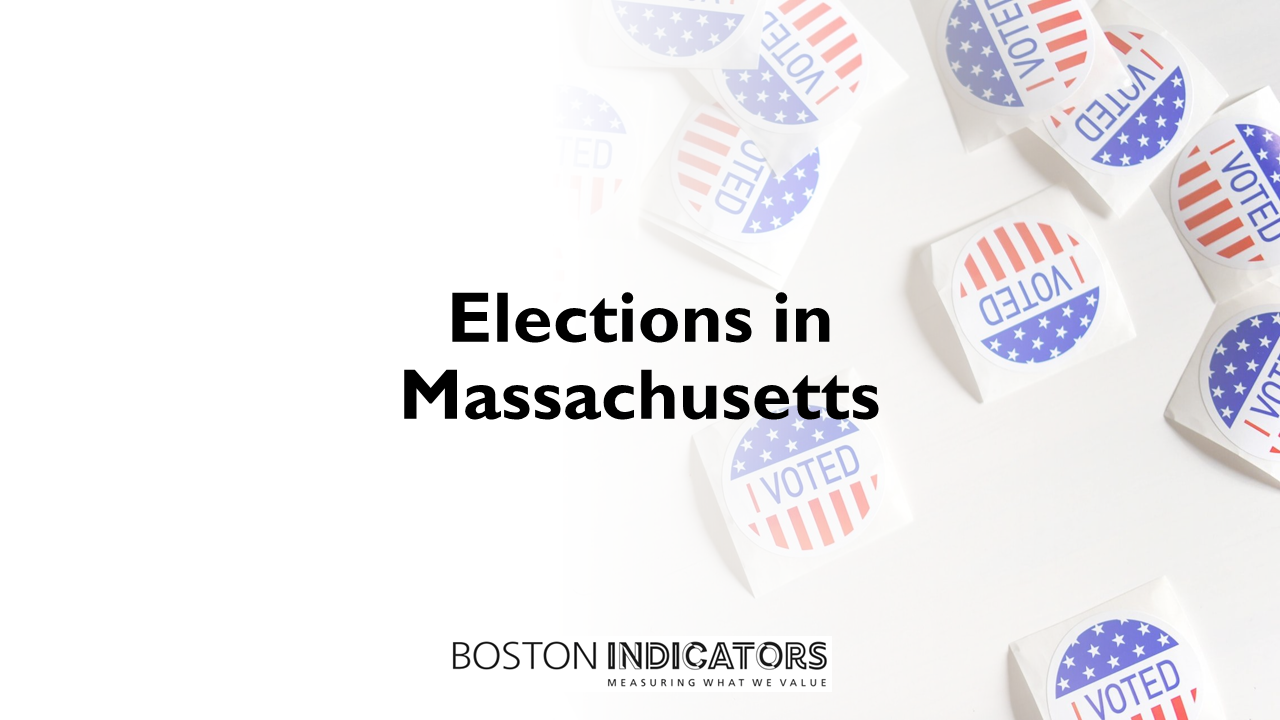Voter Engagement in Massachusetts
By Peter Ciurczak
November 7, 2022
High-turnout, competitive elections are fundamental to the health of any representative democracy. Such elections help ensure that the broadest possible cross-section of the population has their policy preferences represented by those in elected office.
A few weeks prior to the 2022 midterm elections, the Boston Foundation hosted the first in a series of nonpartisan forums on voter engagement. Boston Indicators Research Analyst Peter Ciurczak kicked off the event with a presentation of wide-ranging data showing how Massachusetts is doing on voter turnout, competitive races, and other trends. Some important takeaways from this election-related research include:
- Voter turnout is much higher for “on-cycle” elections when federal elections are on the ballot. Turnout for the 2020 presidential election cycle was 76 percent statewide and 68 percent in Boston. By contrast, turnout for Boston’s 2019 city council races was only 17 percent.
- State legislative races in Massachusetts are rarely competitive. In 2020, for instance, 81 percent of legislative elections in Massachusetts saw no major party challenge.
- Massachusetts Democrats have one of the largest registration advantages of any state political party in the country. Democratic Party enrollment outnumbers Republican enrollment 3 to 1, and that advantage gets larger when accounting for independents, who largely lean Democratic in Massachusetts.
- Due to this registration imbalance, Democratic primaries increasingly function as the general election. This is problematic from a voter engagement perspective since primaries receive significantly less attention than general elections. Just weeks before this September’s primary, for instance, a majority of Democratic primary voters had never heard of most of the candidates running for statewide office in 2022.
- Voter turnout varies greatly by demographic group. For both the 2018 midterms and the 2020 presidential election, voters between the ages of 18 and 24 turned out at the lowest rates. Over the same two elections, White voters turned out at higher rates than Black, Latino or Asian voters, although turnout among each of these racial groups has been trending upwards the last decade.
To watch a video of this presentation paired with the panel discussion on voter engagement that followed, head over to the Boston Foundation’s Dialogues on Voter Engagement. This presentation and the subsequent panel originally aired October 18th, 2022.

